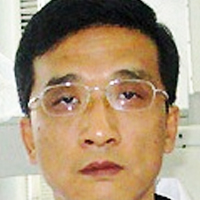Evaluation of Uranium in Organs of Residents from an Uranium-Rich Region using Teeth as Bioindicators
Published on: 26th March, 2020
OCLC Number/Unique Identifier: 8588716918
The Uranium extraction and processing plant of INB (Brazilian Nuclear Industries) is in Caetité, a city located in a region hosting the largest Uranium reserve of the country. The degree of Uranium contamination in the Caetité population was investigated before using teeth as bioindicator, where a quite high Uranium concentration was measured in this region, about 160 times higher than the world-wide average. Radiobiological risks are here evaluated from Uranium burdens in organs as skeleton, kidneys, liver, tissues and blood, which were estimated from transfer coefficients and effective internal doses. This was accomplished by means of calculations with the use of the STATFLUX/ICRP approach, plus a set of Uranium transfer rate parameters as function of individual’s age assuming an uninterrupted exposure over a period of 60 years. It was found that U ingestion rates by residents of Caetité are three orders of magnitude higher than worldwide average, indicating that food and water would exhibit high levels of contamination. Calculated effective internal doses range from a minimum of one to a maximum of three orders of magnitude higher than background doses, for blood and bones respectively. The likelihood that this circumstance could lead to serious health problems as e.g. neoplasia is addressed. The methodology presented in this work offers subsidies for further studies on environmental pollution by radionuclides.
Assessment and sensitive analysis of biological water risks in water resources with application of classical mass transfer computations
Published on: 9th June, 2021
OCLC Number/Unique Identifier: 9124650394
Due to the urgent need for water in all parts of industrial or developing societies, water supply, and transmission facilities are suitable targets for biological risks. Given that even a short interruption in water supply and water supply operations has a great impact on daily activities in the community, the deliberate contamination of urban water resources has irreparable consequences in the field of public health, and the economy of society will follow. Unfortunately, most officials in the public health control departments in our country have received limited training in detecting accidental or intentional contamination of water resources and dealing with the spread of waterborne diseases both naturally and intentionally. For this reason, there is low preparedness in the responsible agencies to deal with waterborne diseases during biological risks. In the first step of this research, a review study has been conducted on water biological risks and operational strategies to deal with them. In the following, it has studied how Escherichia coli (E. coli) bacteria spread in aqueous media. In this regard, the kinetic model of the studied microorganism was analyzed based on the implementation of (Fick Law) in polar coordinates and the combination of (Dirac Distribution) with (Legendre polynomial) distribution. Finally, after studying the factors affecting the microbial pollutant emission coefficient, the effects of all three factors of linear velocity, linear motion time period, and angle of motion on the pollutant emission flux and biofilm diffusion time in the water supply network environment were investigated. Studies have shown that the linear velocity parameter of Escherichia coli with a nonlinear relationship has the greatest effects on the release of microbial contaminants.
















